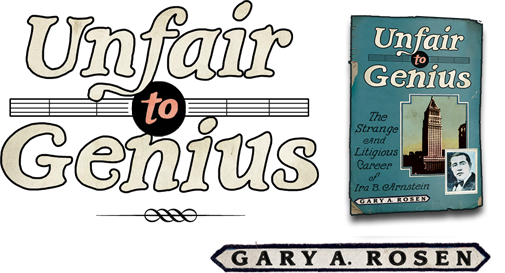

 In the canonical timeline of American popular music, Tin Pan Alley lasted until the arrival of rock and roll in the 1950s, when the “Brill Building” emerged as the new geographical center and verbal shorthand for popular songwriting and publishing. In reality, Tin Pan Alley as properly understood had been relegated to history more than a quarter century before the advent of rock and roll. For most baby boomers, and even the generation born just before World War II, if a genuine Tin Pan Alley tune is familiar at all it is probably from watching old cartoons on television— perhaps Bugs Bunny singing “The Daughter of Rosie O’Grady” or Betty Boop and the “bouncing ball” doing “Wait till the Sun Shines, Nellie.”
In the canonical timeline of American popular music, Tin Pan Alley lasted until the arrival of rock and roll in the 1950s, when the “Brill Building” emerged as the new geographical center and verbal shorthand for popular songwriting and publishing. In reality, Tin Pan Alley as properly understood had been relegated to history more than a quarter century before the advent of rock and roll. For most baby boomers, and even the generation born just before World War II, if a genuine Tin Pan Alley tune is familiar at all it is probably from watching old cartoons on television— perhaps Bugs Bunny singing “The Daughter of Rosie O’Grady” or Betty Boop and the “bouncing ball” doing “Wait till the Sun Shines, Nellie.”

The Great American Songbook is the product of an entirely different form of industrial organization, in which songwriters were no longer subsistence piece workers prized for their conformity to established rules, or for their ability to crank out knockoffs of the latest hit, or to cater to the latest dance craze.  The important post–Tin Pan Alley songwriters were comparatively autonomous auteurs, free to make demands on the public, instead of kowtowing to its established preferences. The standards they wrote belong to their own era, extending roughly from the mid-1920s to the mid-1950s, richly deserving of a pithy sobriquet of its own. If “Tin Pan Alley” denotes an era when music publishers dominated the popular music world, and “rock and roll” a time, apparently here to stay, defined by superstar performers and integrated big media companies, then the intervening period, when the composers and lyricists of the American popular art song reigned, was truly the “Age of the Songwriter.”
The important post–Tin Pan Alley songwriters were comparatively autonomous auteurs, free to make demands on the public, instead of kowtowing to its established preferences. The standards they wrote belong to their own era, extending roughly from the mid-1920s to the mid-1950s, richly deserving of a pithy sobriquet of its own. If “Tin Pan Alley” denotes an era when music publishers dominated the popular music world, and “rock and roll” a time, apparently here to stay, defined by superstar performers and integrated big media companies, then the intervening period, when the composers and lyricists of the American popular art song reigned, was truly the “Age of the Songwriter.”
©2012 Gary A. Rosen